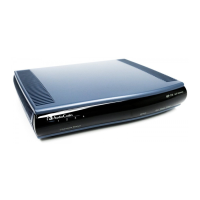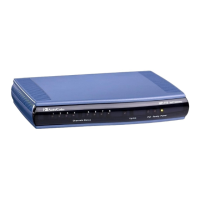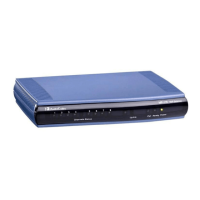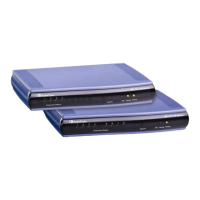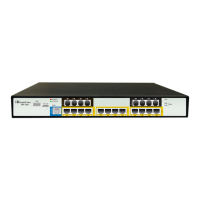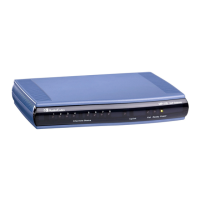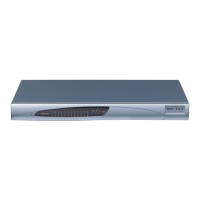b. Set the 'V.22 Modem Transport Type' parameter to Disable
(V22ModemTransportType = 0).
c. Set the 'V.23 Modem Transport Type' parameter to Disable
(V23ModemTransportType = 0).
d. Set the 'V.32 Modem Transport Type' parameter to Disable
(V32ModemTransportType = 0).
e. Set the 'V.34 Modem Transport Type' parameter to Disable
(V34ModemTransportType = 0).
13.2.4 V.152 Support
The device supports the ITU-T recommendation V.152 (Procedures for Supporting Voice-
Band Data over IP Networks). Voice-band data (VBD) is the transport of modem, facsimile,
and text telephony signals over a voice channel of a packet network with a codec
appropriate for such signals.
For V.152 capability, the device supports T.38 as well as VBD codecs (i.e., G.711 A-law
and G.711 μ-law). The selection of capabilities is performed using the coders table (see
'Configuring Coders' on page 191).
When in VBD mode for V.152 implementation, support is negotiated between the device
and the remote endpoint at the establishment of the call. During this time, initial exchange
of call capabilities is exchanged in the outgoing SDP. These capabilities include whether
VBD is supported and associated RTP payload types ('gpmd' SDP attribute), supported
codecs, and packetization periods for all codec payload types ('ptime' SDP attribute). After
this initial negotiation, no Re-INVITE messages are necessary as both endpoints are
synchronized in terms of the other side's capabilities. If negotiation fails (i.e., no match was
achieved for any of the transport capabilities), fallback to existing logic occurs (according to
the parameter IsFaxUsed).
Below is an example of media descriptions of an SDP indicating support for V.152. In the
example, V.152 implementation is supported (using the dynamic payload type 96 and
G.711 u-law as the VBD codec) as well as the voice codecs G.711 μ-law and G.729.
v=0
o=- 0 0 IN IPV4 <IPAdressA>
s=-
t=0 0
p=+1
c=IN IP4 <IPAddressA
m=audio <udpPort A> RTP/AVP 18 0
a=ptime:10
a=rtpmap:96 PCMU/8000
a=gpmd: 96 vbd=yes
Instead of using VBD transport mode, the V.152 implementation can use alternative relay
fax transport methods (e.g., fax relay over IP using T.38). The preferred V.152 transport
method is indicated by the SDP ‘pmft’ attribute. Omission of this attribute in the SDP
content means that VBD mode is the preferred transport mechanism for voice-band data.
To configure T.38 mode, use the CodersGroup parameter.
Note: You can also configure the device to handle G.711 coders received in INVITE
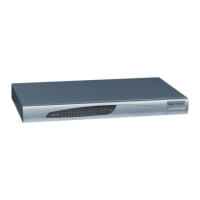
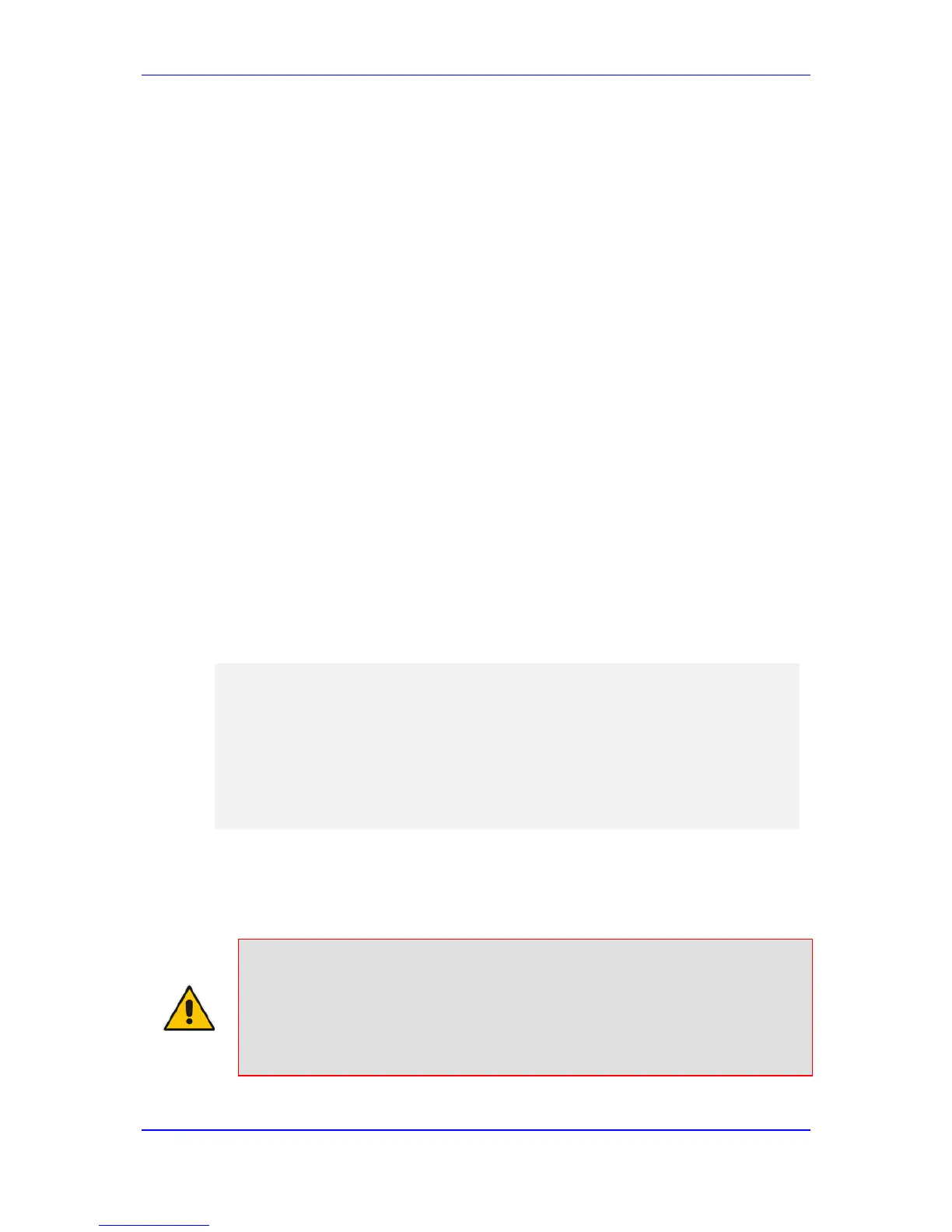